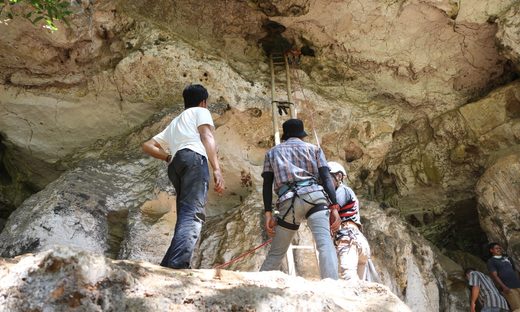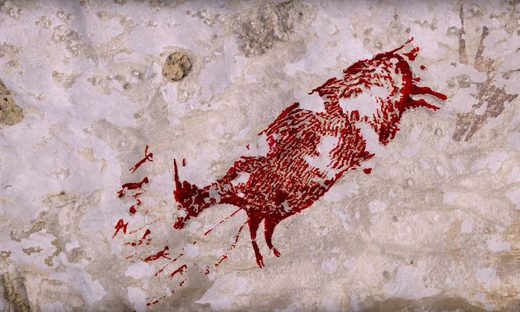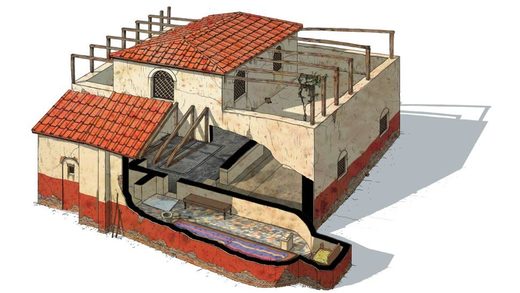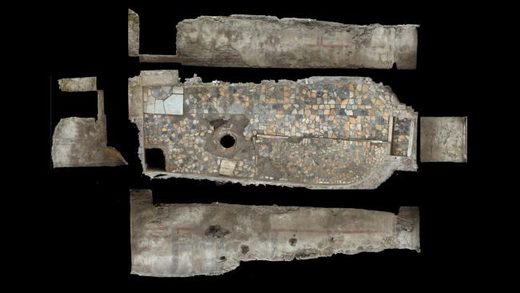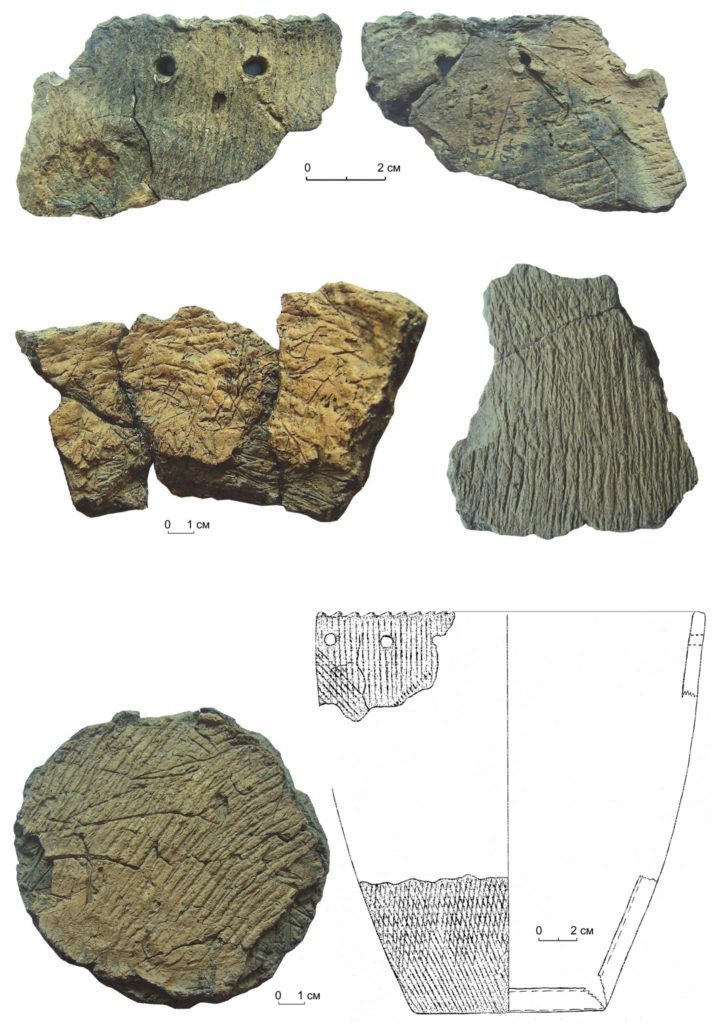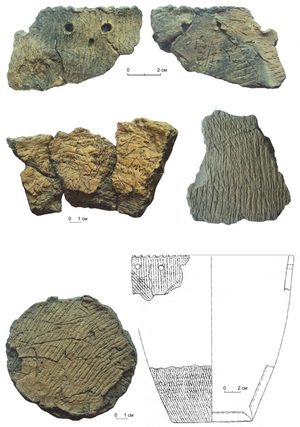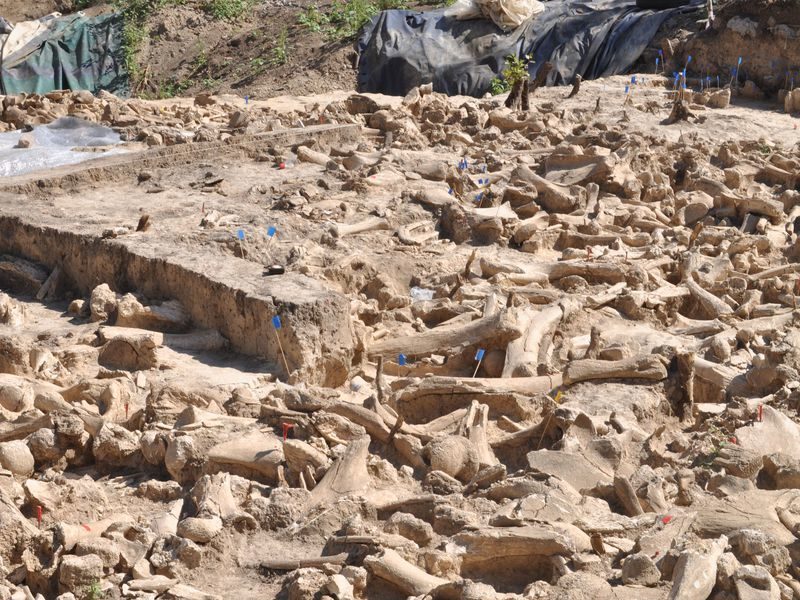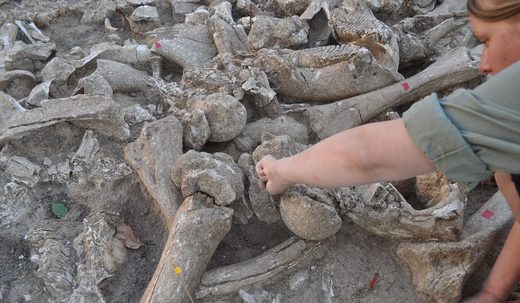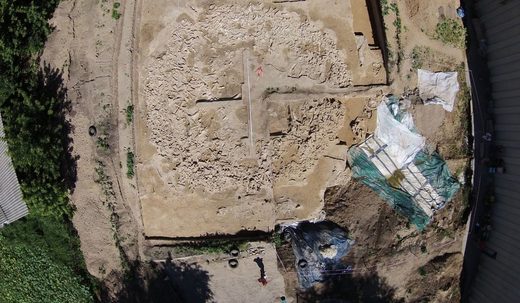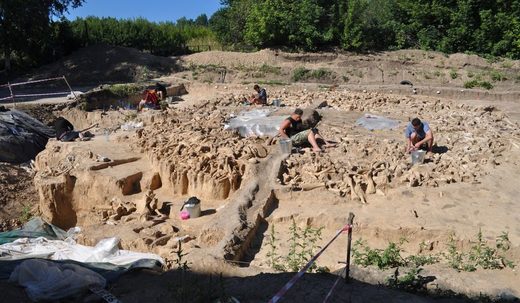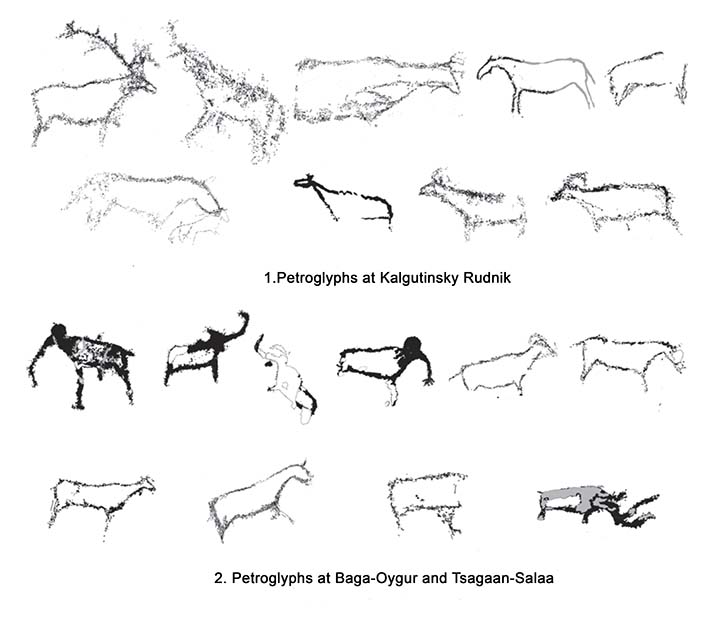[...]
Another item is the fact that
a
particular type of knife is often depicted in the hand of Perseus, called a harpe, and
having an extra curved blade. Mithras is shown with a straight dagger, but the harpe
appears to be
an important symbol of the fifth grade of the cult and a curved knife, of
the seventh.
[...]
What caught my attention was that one of the scenes is supposedly an initiation where
the person in
the rank of the Father, wearing the Phrygican cap, is in the act of drawing a bow and
aiming the arrow straight at the naked figure in front of him, the person being
initiated. A third figure is present making a hand gesture with thumb and two fingers
(index and middle) extended and the other two fingers folded over the palm. [ See here for some images of the hand gestures described] Beck proposes that the activity is designed to convey information on more than one level.
In the first place, it is a reenactment of a cult myth that is found in many side scenes
in mithraea, something called the “water miracle” where Mithras shoots an arrow at a
rock to draw water from it. On another level, it is designed to induce in the initiate a
certain state or, at least, represent his passage from one state to another by means of
having received certain teachings. The third level was that the performance of the
ritual would act as a form of sympathetic magic and change the conditions of the
present environment as the conditions of the environment had been changed in the
past by the actions of the god.
...the mythic event of the water miracle is replicated in ritual, as a rite of
initation, by the feigned archery of the Father, just as the banquet of Mithras
and Sol is replicated by the banquet of the initiates presided over by the
Father and the Sun-Runner. ... why should the water miracle be chosen as the
archetype for an initiation ritual: With the banquet the question scarcely
arises; that the celebration of man should replicate the celebration of gods is
self-evidently appropriate. The relevance of Mithras’ archery to initiation,
however, is not so obvious. ...
Scholars, however, are unanimous in the following reading: Mithras shoots
at a rock and elicits water from it; the other figures in the scene (sometimes
one, sometimes two) serve either to petition Mithras or to receive gratefully
(sometimes in cupped hands) the gushing water. The archery is thus
interpreted as a victory over drought, an action once performed by the god in
mythic time to relieve world-wide aridity and thus performable again in
actual time at the behest of his devotees.
...a ritual of initiation that replicates the water miracle is admission into
that more abundant life symbolized by the waters elicited by Mithras the
bowman. ...archery thus becomes a mode of baptism. 16
That no questions are raised about the banquet is surprising considering the extract
from Revelation, above, and what a gods’ banquet might actually be. As for the
interesting hand gesture, it has been studied extensively by various scholars and
apparently indicates “the presentation of reason through language,” i.e. that something
is being spoken during the initiation that carries some weight or that teachings have
been given that have led to this initiatory moment. But, what strikes me the most
about this event attributed to Mithras is that, once again, we have a correspondence to
Moses in the desert striking the rock for water during the protracted, 40 year, Exodus.
There were actually two water miracles of Moses: in the first case, 17 he was instructed
to strike the rock with his staff; he did and water flowed. In the the second instance,
40 years later, he was told to just speak to the rock. 18 But he didn’t, he struck it
instead and nothing happened. Then he hit the rock a second time, and finally the
water came. It is said that it was for this lack of following instructions exactly or lack
of faith, that Moses was denied entry to the Promised Land which seems pretty harsh
to me as I’ve already mentioned. Naturally, there’s a whole lot of mental gymnastics
that gets performed explaining that nonsense, but what is important is that we are
seeing here, instances where striking a rock (or initiate) for water and speaking to a
rock (or initiate) are related to each other in a peculiar way. It is as though there is a
dual emphasis on action and word that can be done and spoken to re-invigorate or
replicate the miracle of getting water from a rock or achieving abundant life; the right
ritual, the correct behavior, can align one with the powers of the god. Perhaps the
ritual was as simple as reciting the story of the event while it was being re-enacted, or
saying the correct words that were alleged to have been spoken by the god at the time;
it could have been as complex as a long period of instruction and efforts to achieve
self-knowledge before initiation was performed.
Well, that’s the astral religion angle. What about the cometary angle? Could the
arrow represent a thunderbolt, as in an electrical discharge that split a rock and water
burst forth? A thunderbolt is accompanied by a tremendous crashing sound, i.e. “the
voice of god”, so perhaps the comet Moses had lost his vigor after 40 years?
There is another series of interesting connections to this idea of stones releasing
water though it is combined with stones that also stop water, and stones with symbols
of gods graven on them thus giving them power, possibly the power of “the word”.
So, let us make a somewhat deeper digression that will bring a number of elements to
light.
Ulansey conjectures that the influence of Aratus in Tarsus may have led to the
emphasis on astrology within the Stoic movement. It could very well be that it was
from Eudoxus 3000 year old astronomical knowledge,combined with the works of
Pherecydes and Pythagorus, that the tauroctony of the Mithraic Mysteries derived.
But there is more to it than that: in case you didn’t notice, the figures in the taruoctony
are reversed from the way they actually appear in the sky. Ulansey proposes:
...on ancient (and modern) star-globes (like the famous ancient “Atlas
Farnese” globe) Taurus is always depiected facing to the right exactly like the
bull in the tauroctony.
This shows that the Mithraic bull is meant to represent
the constellation Taurus as seen from outside the cosmos, i.e. from the
“hypercosmic” perspective... 19 Yet we know, for a certainty, that the particular
time is important, as I said, from my own arrival at that date via a different
path, as well as Ulansey’s interpretation of the equinoxes being delimited via
the figures Cautes and Cautopates. It appears to me that someone was doing
some searching and putting clues together back then, and doing a bang-up
job of it too! So, let us continue to see if we, too, find more clues.
that probably led to the movement of Stoicism underground to be reincarnated as
the Mysteries of Mithras. Hipparchus is central to Ulansey’s theory that precession of
the equinoxes was the great secret of the Mystery cult and that may very well be true,
but I think there was a lot more to it than that. There is no known connection between
Hipparchus and the Stoics except for the fact that he lived at Rhodes and so did
Panaetius and Posidonius; but we’ll come to that.
The same is true of
the lion-headed god who holds just such a lightning bolt on his
chest and, as we will see, just such a lightning bolt is one of the initiatic symbols of
the Mithraic Mysteries.
Perhaps the “weighty words” being indicated in the ritual enactment on the Mainz
vessel, as well as the word that Moses should have spoken to the rock to produce
water, was the “name of the god”? That does seem to be what is indicated by the
“Seal of Solomon”, i.e. the Mâgên Dâwîd, being inscribed on
the stone that was
throne into the well by David
 I can't wait to read more of it and get stuck into the creation myths.
I can't wait to read more of it and get stuck into the creation myths. I can't wait to read more of it and get stuck into the creation myths.
I can't wait to read more of it and get stuck into the creation myths.

